LAYING THE FOUNDATIONS OF THE FUTURE
By Sophie Lambert
The fabric of the University campus has changed dramatically over the last ten years thanks to the philanthropic efforts of people like John Shaw and Kiran Mazumdar-Shaw.
The flagship building of our campus development, the Mazumdar-Shaw Advanced Research Centre (ARC), bears the names of Glasgow alumnus John Shaw (MA 1970) and his wife Kiran Mazumdar-Shaw, who together donated $7.5 million towards its construction. John and Kiran’s extraordinary gift is one of the largest ever received by the University and its power and potential cannot be overstated. As well as enabling the development of cutting-edge facilities and a professorial chair (the Mazumdar-Shaw Chair in Molecular Pathology), this pledge has created the opportunity to put Glasgow at the forefront of world-changing research and make an impact that will be felt across the globe.
John’s generosity and benevolence can be seen throughout his life; he supported a wide variety of projects while simultaneously building a highly successful career. Prior to entering the world of work, John studied History and Political Economy at Glasgow.
His keen interest in business was evident during his studies and, in his final year, he became chairman of the Adam Smith Society, the largest and oldest academic society at Glasgow. John’s final year also saw him join the Officers’ Training Corps, where he was awarded the Outstanding Cadet medal and gained experience that he said taught him leadership and gave him the confidence to meet any challenge in his working life.
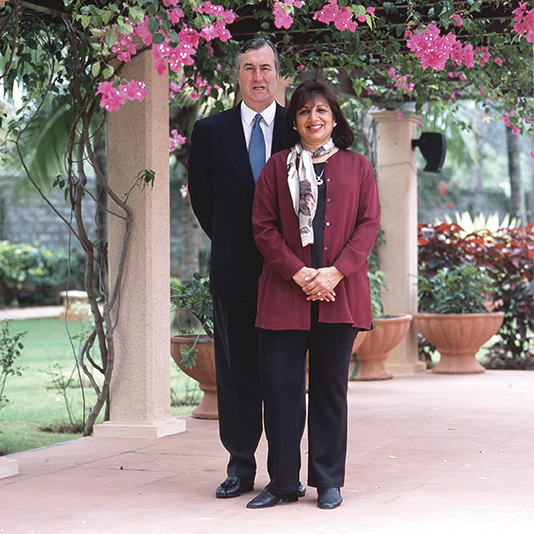
John Shaw (MA 1970) and Kiran Mazumdar-Shaw, after whom our Advanced Research Centre is named.
A global career
After graduating in 1970, John began work at Paisley-based textile company Coats, where he had the opportunity to travel extensively, including to Mexico, Thailand and Venezuela. John quickly progressed through the business and was promoted to the role of Finance & Managing Director of Coats Viyella Group, before joining the brand’s Indian subsidiary, Madura Coats, as Chairman.
It was while in India that John first met Kiran Mazumdar, founder of the pioneering biotech business, Biocon. The two were married in Perthshire in 1998 and, in the same year, John joined Kiran’s company and helped to negotiate the buyout of the business’s key stakeholder, making Biocon an independent company.
Making an impact side by side
Together, Kiran and John grew Biocon into the global biopharmaceutical powerhouse it is today, while pursuing the goal of achieving health equity through the creation of affordable, accessible healthcare products. As well as building a hugely successful business, John and Kiran continued to invest in their philanthropic work, creating the Biocon Foundation and supporting projects across areas including healthcare, education, rural development, research and innovation. John also made donations to other institutions from his hometown, including a gift of £1.5 million to his former secondary school, which led to the creation of the John Shaw Science Wing at the High School of Glasgow.
An enduring legacy
John’s life was filled with acts of kindness and, although he sadly passed away in 2022, the impact of his world-changing giving will continue to be felt through the innovations and discoveries that were made possible by his philanthropy.
India's first self-made female billionaire
Kiran Mazumdar-Shaw’s early aspirations saw her pursue a career in brewing in Australia. But her path changed in 1978 when she launched Biocon out of a garage in the suburbs of her hometown of Bengaluru, India. Initially, the business manufactured enzymes, but evolved to become focused on biopharmaceuticals.
In 2004, John and Kiran floated Biocon on the stock market and the business became the second Indian company to close its first day of trading with a market value of over $1 billion.
Kiran credits her relationship with John as an important factor in helping her to grow Biocon into the business it is now.
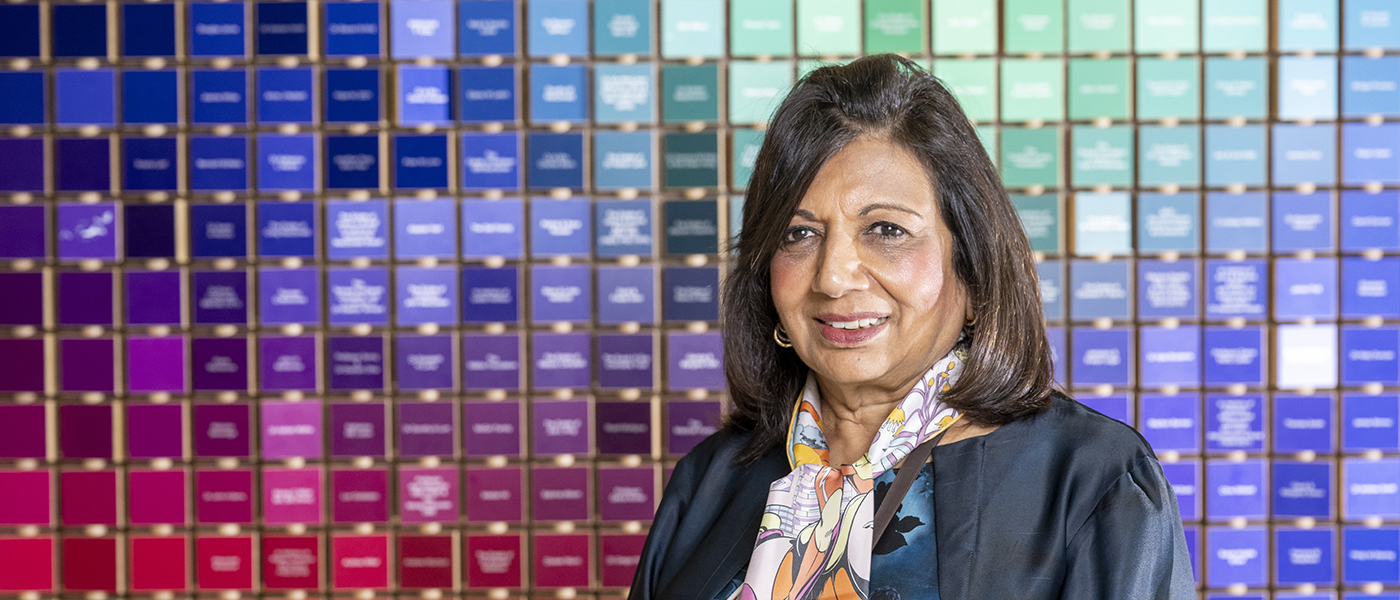
Kiran Mazumdar-Shaw in front of the colourful donor wall in the Advanced Research Centre.
Today, Biocon is India’s largest listed biopharmaceutical firm by revenue and employs more than 16,500 people around the world. In addition to building this incredible business, Kiran has worked tirelessly on her philanthropic missions and has achieved global recognition for her outstanding contributions.
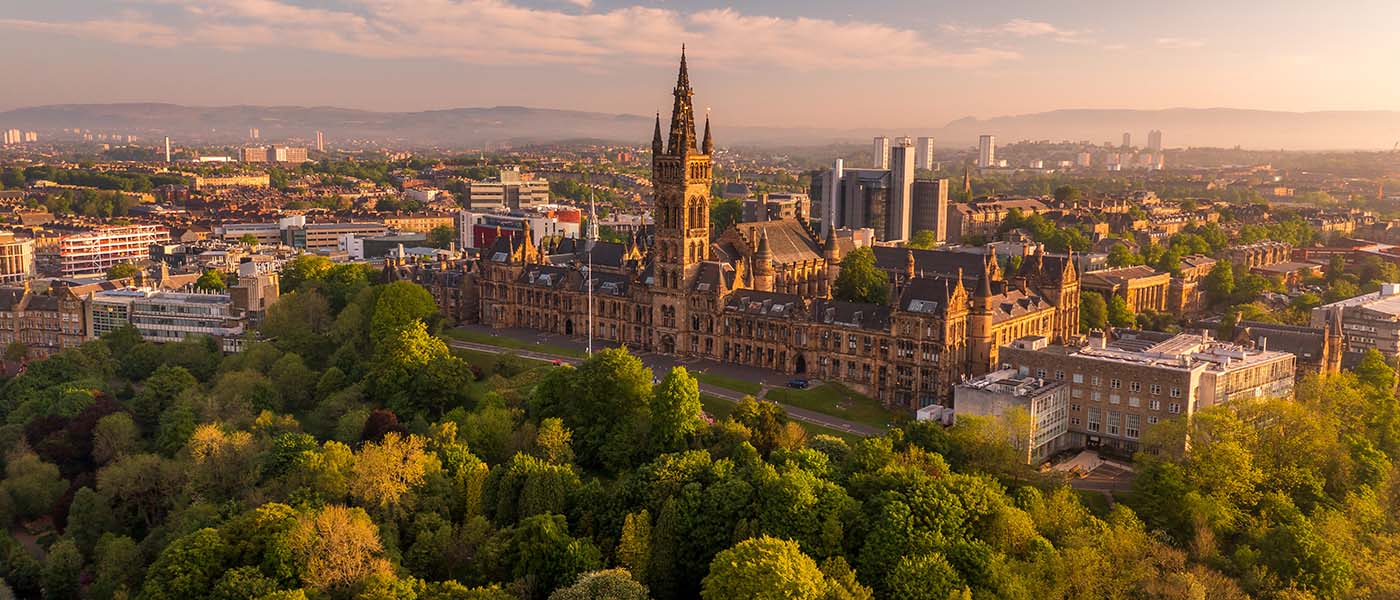
Our evolving campus
If you have walked along University Avenue in recent years, you will have been struck by Gilmorehill's incredible transformation. From the construction of the Gilbert Scott Building to the development of the University’s Western site, Glasgow’s campus is continually growing and evolving to meet the needs of our staff, students and wider community. The world-changing giving of our incredible donor community has been essential to this remarkable transformation and the names of many of those who have contributed can be seen around the University today.
A Royal Rescue
Philanthropic giving in all its forms has been essential to the University of Glasgow since its foundation in 1451, with one of the most notable early donations having been provided by Mary Queen of Scots in 1560.
Clarice Pears Building
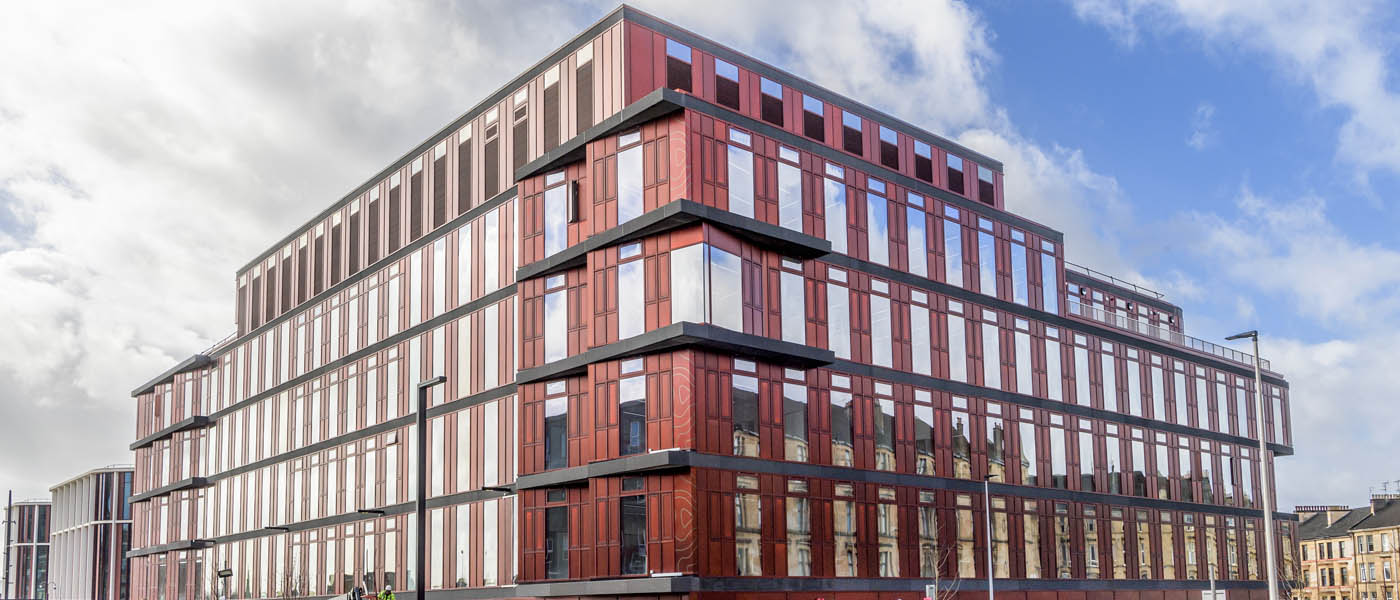
Opened officially in September 2023, the Clarice Pears Building, home to the School of Health & Wellbeing, is one of the most recent examples of the power of world-changing giving at Glasgow. This new facility received a £5 million grant from Pears Foundation, a philanthropic organisation founded by brothers Mark, David and Trevor Pears. The building, which has been named after the mother of the Pears brothers, brings together teams from ten different sites across the city to help tackle health inequalities and provides public spaces that are designed to connect the University with the local community.
Pearce Lodge
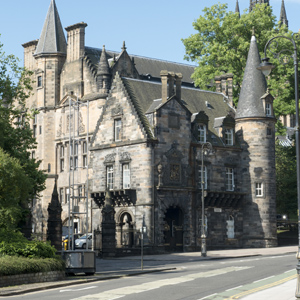
Pearce Lodge is one of the oldest buildings on campus as parts of its facade, including the gateway, were transferred brick-by-brick from the University’s original site in the centre of Glasgow. This painstaking reconstruction was completed in the late 1880s and was funded by Sir William Pearce, a naval architect and sole partner of Fairfield Shipbuilding & Engineering Company Limited. Located in Govan, Sir William’s company built some of the world’s largest and fastest vessels and employed thousands of local people on the banks of the Clyde. Today, Pearce Lodge remains an important link to the University’s past and provides office space for the Planning, Insight & Analytics team.
McIntyre Building

Located at the Main Gate, the McIntyre Building is the first building that many visitors to the campus will encounter. Funded by former student Dr John McIntyre, who made a donation of £5,000, this historic building was designed by esteemed architect Sir John James Burnet, who is responsible for a number of Glasgow’s notable buildings. The McIntyre Building first opened in 1890 and served as the Glasgow University Union until the 1930s, when it became home to the Queen Margaret College. The building was renamed from the John McIntyre Building in 2016 and now houses several important services including the Welcome Point reception, the Students’ Representative Council offices and the Confucius Institute.
Randolph Hall
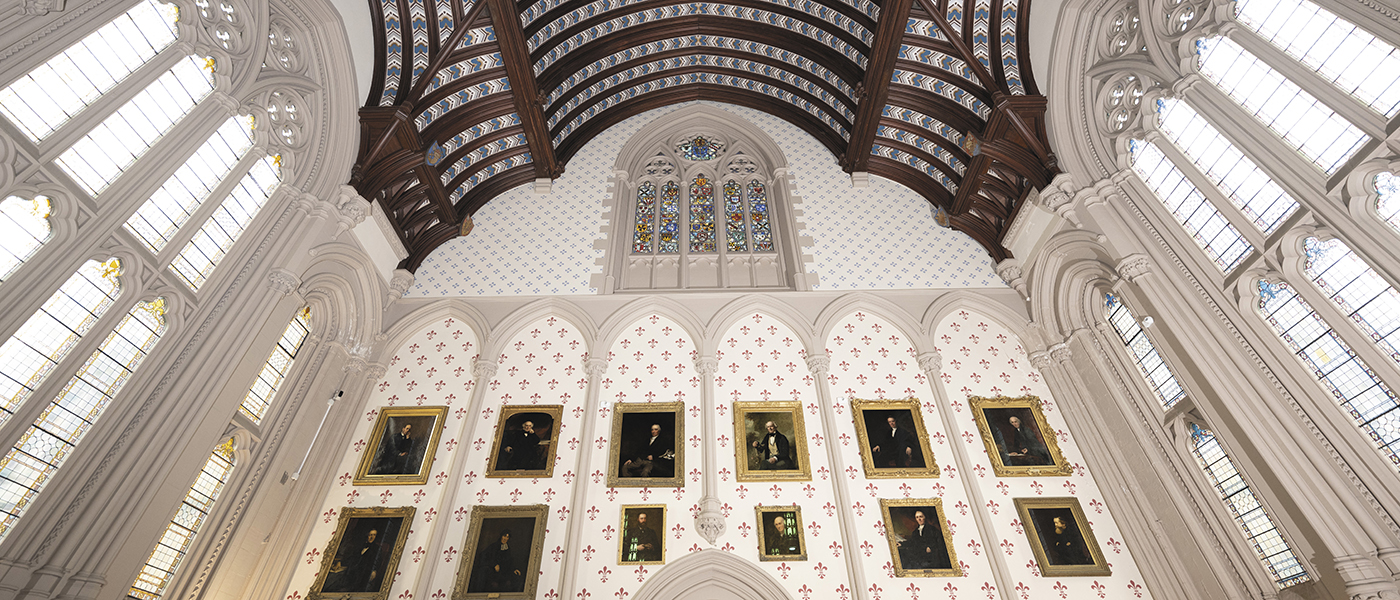
The construction of Randolph Hall, which is situated in the Gilbert Scott Building, was made possible by a very generous bequest from Charles Randolph. He studied at the University before going on to become a marine engineer and, eventually, a partner in Randolph, Elder & Co, one of the most successful enterprises on the Clyde. Upon his death in 1878, Randolph left £60,000 to the University and this legacy made it possible for Randolph Hall to be completed to a significantly higher standard than originally planned. This fund was also used to create the opulent Randolph Staircase which provides a grand entrance to the iconic Bute Hall.

